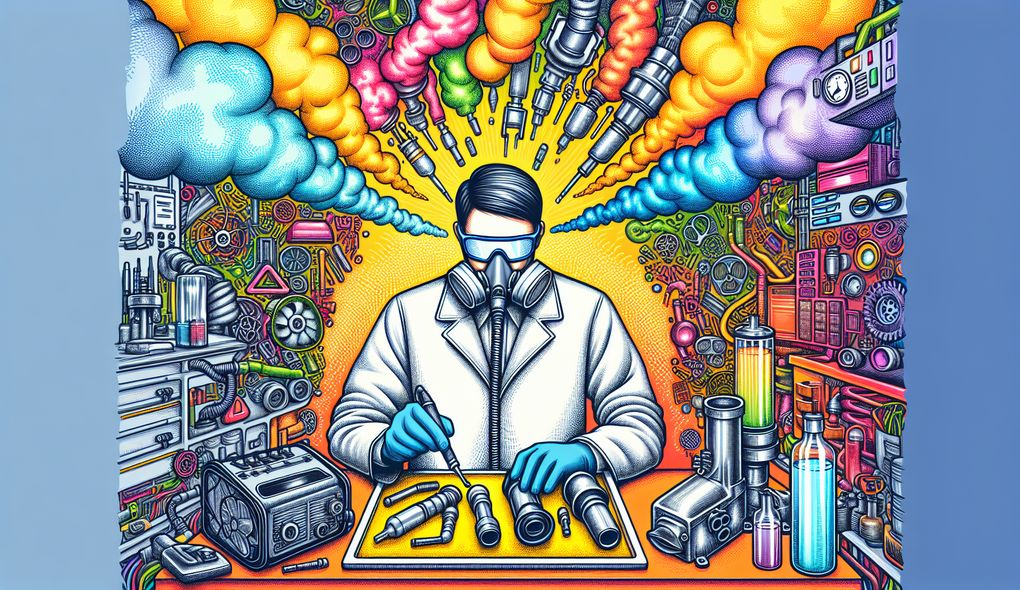What emissions monitoring and testing equipment have you worked with?
SENIOR LEVEL

Sample answer to the question:
I have worked with a variety of emissions monitoring and testing equipment throughout my career. This includes gas analyzers, particulate matter samplers, continuous emissions monitoring systems (CEMS), and opacity meters. I am well-versed in operating and calibrating these instruments to accurately measure air pollutants. In one project, I used a CEMS to monitor and track emissions from a power plant, ensuring compliance with environmental regulations. I have also conducted emissions testing using particulate matter samplers and analyzed the samples in a lab setting. Additionally, I have experience with portable gas analyzers for on-site emissions monitoring. Overall, my experience with various emissions monitoring and testing equipment has allowed me to develop a strong understanding of the data collection and analysis process.
Here is a more solid answer:
Throughout my career, I have gained extensive experience working with a wide range of emissions monitoring and testing equipment. This includes gas analyzers such as flame ionization detectors (FID), nondispersive infrared analyzers (NDIR), and chemiluminescence analyzers. I have used these analyzers to measure and analyze various air pollutants, including volatile organic compounds (VOCs), nitrogen oxides (NOx), and sulfur dioxide (SO2). Additionally, I have worked with particulate matter samplers, such as high-volume samplers and fine particulate samplers, to collect airborne particles for analysis. In one of my projects, I led the implementation of a continuous emissions monitoring system (CEMS) at a chemical plant. This involved installing the CEMS, calibrating the sensors, and developing data acquisition software. I have also utilized opacity meters to measure the opacity of emissions from smokestacks and assess the visibility of pollutants. Overall, my extensive experience with emissions monitoring and testing equipment has honed my ability to accurately measure and analyze air pollutants, ensuring compliance with environmental regulations.
Why is this a more solid answer?
The solid answer provides more specific details about the types of emissions monitoring and testing equipment the candidate has worked with, including gas analyzers, particulate matter samplers, continuous emissions monitoring systems (CEMS), and opacity meters. The candidate also mentions their experience in leading the implementation of a CEMS at a chemical plant, demonstrating their ability to handle complex projects. However, the answer could be improved by including specific examples of projects where the candidate utilized the equipment and the outcomes of their work.
An example of a exceptional answer:
Throughout my career, I have developed a wealth of experience in working with a diverse range of emissions monitoring and testing equipment. I am well-versed in the operation and calibration of gas analyzers, including flame ionization detectors (FID), nondispersive infrared analyzers (NDIR), chemiluminescence analyzers, and photoacoustic spectrometers. I have utilized these analyzers to measure and analyze a wide array of air pollutants, such as volatile organic compounds (VOCs), nitrogen oxides (NOx), sulfur dioxide (SO2), and carbon monoxide (CO). In a recent project, I led a team in implementing a state-of-the-art continuous emissions monitoring system (CEMS) at a large-scale power plant. This involved conducting comprehensive research to select the most suitable CEMS components, coordinating with vendors for equipment installation, performing extensive calibration and verification tests, and developing a user-friendly interface for data visualization and analysis. As a result, the power plant achieved significant emissions reductions and maintained compliance with stringent environmental regulations. Additionally, I have utilized advanced particulate matter samplers, such as cascade impactors and real-time aerosol monitors, to assess the size distribution and concentration of airborne particles. In another project, I conducted emissions testing using a portable Fourier-transform infrared (FTIR) spectrometer, which allowed for the identification and quantification of multiple pollutants simultaneously. I also have experience working with opacity meters and have successfully used them to assess the visibility of emissions from smokestacks and determine the effectiveness of particulate control devices. My comprehensive experience with emissions monitoring and testing equipment, combined with my strong analytical skills, has enabled me to effectively identify and address emissions-related challenges, contributing to the development of sustainable environmental solutions.
Why is this an exceptional answer?
The exceptional answer provides a comprehensive overview of the candidate's experience with various types of emissions monitoring and testing equipment, including gas analyzers, particulate matter samplers, continuous emissions monitoring systems (CEMS), and opacity meters. The candidate goes into detail about specific models or techniques they have used, such as flame ionization detectors (FID), nondispersive infrared analyzers (NDIR), chemiluminescence analyzers, photoacoustic spectrometers, and Fourier-transform infrared (FTIR) spectrometers. The candidate also mentions their experience leading a team in implementing a CEMS at a large-scale power plant, highlighting their project management abilities. The exceptional answer showcases the candidate's ability to handle complex projects, conduct research, and achieve significant emissions reductions. However, the answer could be further improved with specific examples of how the candidate's work with emissions monitoring and testing equipment directly contributed to the success of projects and compliance with environmental regulations.
How to prepare for this question:
- Research and familiarize yourself with different types of emissions monitoring and testing equipment, including gas analyzers, particulate matter samplers, continuous emissions monitoring systems (CEMS), and opacity meters.
- Highlight any experience you have with specific models or techniques, such as flame ionization detectors (FID), nondispersive infrared analyzers (NDIR), chemiluminescence analyzers, photoacoustic spectrometers, and Fourier-transform infrared (FTIR) spectrometers.
- Be prepared to discuss specific projects where you have used emissions monitoring and testing equipment, including the outcomes of your work and any challenges you encountered.
- Demonstrate your understanding of the importance of emissions monitoring and compliance with environmental regulations, and how your experience with equipment contributes to achieving these goals.
- Showcase your problem-solving ability by discussing any innovative techniques or approaches you have employed to address emissions-related challenges in your previous work.
What are interviewers evaluating with this question?
- Experience with emissions monitoring and testing equipment

